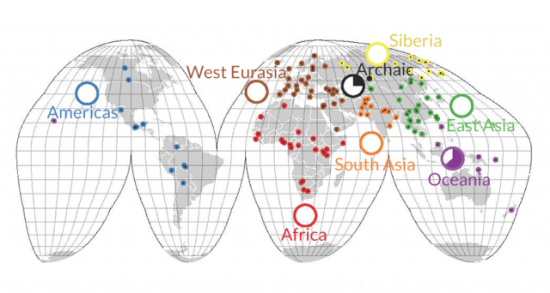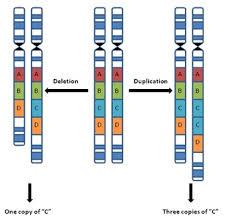John Hewitt
Source - http://www.extremetech.com/extreme/213699-are-modern-humans-really-losing-dna?
 Without dates and DNA, it’s difficult to try to piece together the evolutionary origins of humanity from piles of bones. As we just saw for the new Homo Naledi find in a South African cave, that rarely stops an archeologist from spinning a good yarn. Yet as we have noted, even when researchers do manage to get their hands on good DNA, there is still no guarantee they will arrive at the right conclusions.
Without dates and DNA, it’s difficult to try to piece together the evolutionary origins of humanity from piles of bones. As we just saw for the new Homo Naledi find in a South African cave, that rarely stops an archeologist from spinning a good yarn. Yet as we have noted, even when researchers do manage to get their hands on good DNA, there is still no guarantee they will arrive at the right conclusions.
A curious new paper in Science appears to suggest that our ancestral hominin forebears — human forebears — had more DNA than we do now. Is that really true? Furthermore, is such a thing really even knowable at this point if geneticists and archeologists still can’t even say for sure how many chromosomes our co-evolving hominins, namely Neanderthals and Denisovans, actually had?
There is some evidence these homo others had 46 chromosomes like us, as opposed to 48 like chimps. But for all we know, they could have had 44 like this particular chap from China, and we would be none the wiser. That’s a bit of a problem I think, particularly when you have companies going around telling you what percent of your DNA is ‘Neanderthal’ for a fee.
It also might be problematic for studies like this one here in Science because they are using putative Neanderthal and Denisovian genomes in order to make their comparisons. They’re also claiming to have reconstructed the ancestral human genome (whatever that might mean), which allegedly prevailed “before human migration and subsequent gene loss.” This kind of thinking presupposes a treelike unfolding of humanity, where waves of unadulterated genetic legacy are periodically pumped out of Africa as opposed to a more realistic mesh-like multi-regional topology.
The researchers found, in line with their expectations, that Africans were more likely than non-Africans to have evidence of what they call ancestral sequences. They chalk this up to the “fact” that the latter underwent more population bottlenecks and therefore retained less of the ancestral human diversity. I had asked corresponding author Evan Eichler if he could better explain the rational for concluding that moderns are “missing DNA” in our current genomes, but unfortunately, I got nothing. Therefore we are on our own.
It seems simple enough on the surface — just basic arithmetic. The researchers began by identifying ancestral sequences that were potentially lost by various deletion processes during our evolution. Of note, they found 40.7 Mbp (mega base pairs) that are present in chimp and orangutan reference genomes but absent from the human reference genome. When the researchers then compared modern humans with the more archaic genomes, they found 104 kbp present in Denisova or Neanderthal but not contemporary humans, as well as 33.3 kbp present in contemporary humans but not present in Denisova or Neanderthal.
If you subtract those numbers you get a difference of 70.7 kbp in favor of the elder Neanderthals and Denisova. But can you just do that? And how did the researchers even get at the original numbers in the first place? In a nutshell, they sequenced 236 human genomes drawn from 125 diverse human populations across the planet with 41-fold redundancy to reduce errors. Whereas most diversity studies in the past have looked at single nucleotide variants (polymorphism or differences at single base pair locations) this new study focused instead on copy number variations (CNVs).
 As illustrated, CNVs are just what they sound like — variations in the number of copies of specific sections of various chromosomes. Sometimes these sections will contain just a single gene or even just part of a gene. Depending on how the sequences are ultimately post-processed, these CNVs can other times contain several genes. The authors report an average CNV size of around 7000 base pairs, with around 80% of the sequences weighing in at under 25 kbp. Since CNVs are fairly stable and transmissible across generations, it is typically assumed that they directly reflect genetic heritage.
As illustrated, CNVs are just what they sound like — variations in the number of copies of specific sections of various chromosomes. Sometimes these sections will contain just a single gene or even just part of a gene. Depending on how the sequences are ultimately post-processed, these CNVs can other times contain several genes. The authors report an average CNV size of around 7000 base pairs, with around 80% of the sequences weighing in at under 25 kbp. Since CNVs are fairly stable and transmissible across generations, it is typically assumed that they directly reflect genetic heritage.
However, CNVs can be created by several mechanisms during normal development, many of which are just beginning to be understood. We recently discussed, for example, how homologous recombination is intimately involved in several normal mechanisms of genetic repair. Homologous recombination, where sequences are exchanged between two similar stretches of DNA, is used for more than just repair. During meiosis in which sperm and egg cells are created, it is used to directly hack new combinations code, including CNVs.
With better understanding of how variation is created and eliminated within genomes and populations, researchers should gain a better handle on how species change through time. Without occasionally calling into question the methods and assumptions regularly used in the field, one is left with a myopic cadre of strict adherents acting in mutual reinforcement. This tends to exclude novel contributions to the field, like the Eugene McCarthy’s hybrid origins theory for example, before they can even be properly vetted.